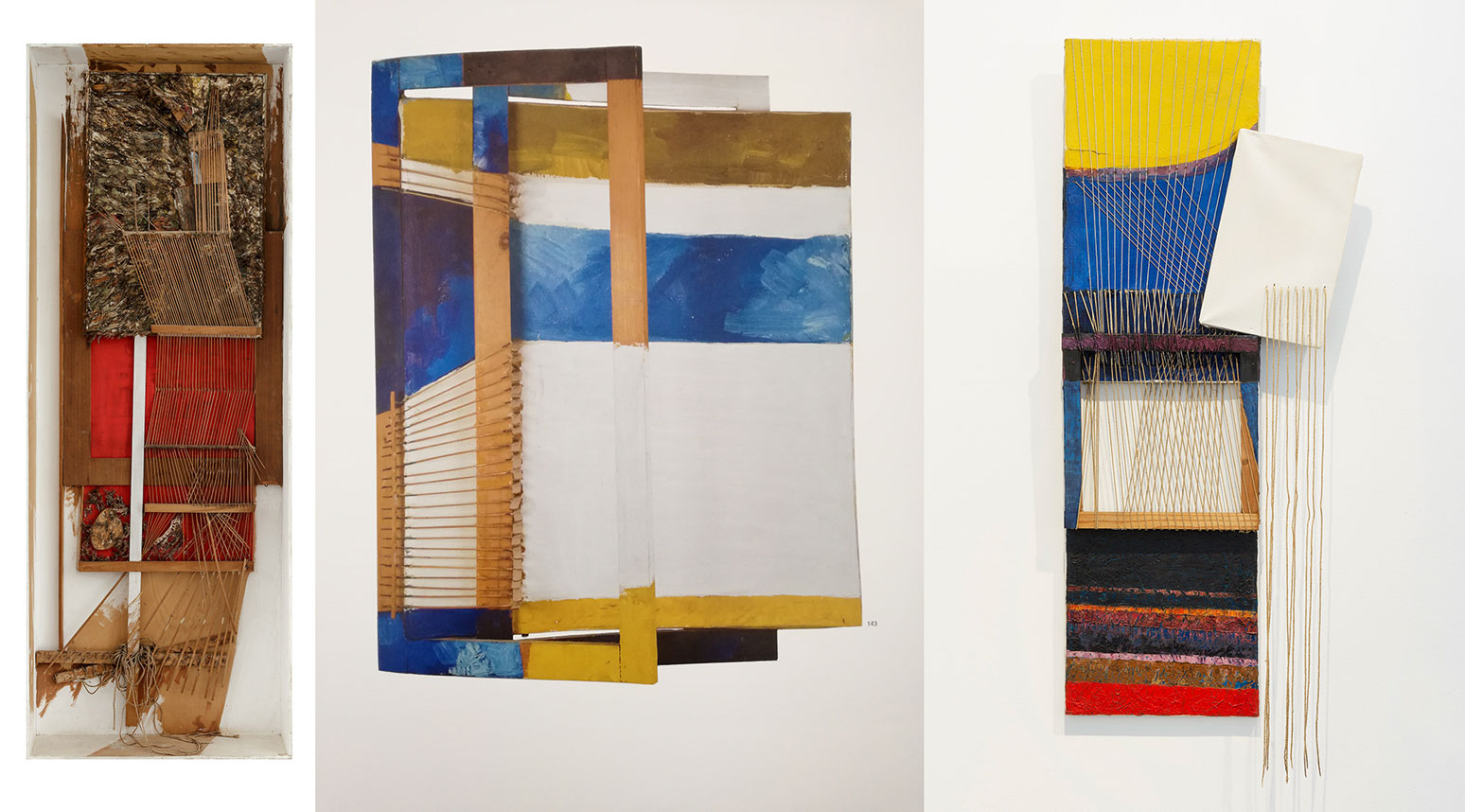ART CITIES:Rome-Maria Lai
 Maria Lai is without doubt one of the leading figures in the history of contemporary Italian art. Not only on account of the content of her works, but also thanks to the diversity of her artistic approach, ranging as it does across many media – public art, embroidery, weaving, sculpture, drawing, and writing: all are grist for her poetics.
Maria Lai is without doubt one of the leading figures in the history of contemporary Italian art. Not only on account of the content of her works, but also thanks to the diversity of her artistic approach, ranging as it does across many media – public art, embroidery, weaving, sculpture, drawing, and writing: all are grist for her poetics.
By Dimitris Lempesis
Photo: MAXXI Archive
Presenting approximately 200 works from the early 60’s through to her final research and include sewn books, sculptures, public works and her celebrated “looms”, both Private Collections and the Maria Lai archives, the exhibition “Maria Lai. Holding the Sun by the Hand” celebrates what would have been the hundredth birthday of Maria Lai. The title of the exhibition “Holding the Sun by the Hand” is a citation from and tribute to the first sewn fable created by the artist in 1983. Both the title and the work contain many of the elements typical of Lai’s research: her interest in poetry, language and the word; the cosmogony of her geographies evoked by the sun; the pedagogical vocation implicit in that “taking by the hand”. Not so much a classic retrospective as a story that is not bound by purely chronological constraints and follows a peculiar biographical and artistic path, characterised by discourses and intuitions apparently left suspended before being taken up again many years later. Divided into five thematic sections, the exhibition reflects the overlapping concerns that harmonize in Lai’s oeuvre. Maria Lai (27/9/1919-16/4/2013) was one of the most singular voices in Italian art from World War II on. Her special talent for drawing led her in 1939 to enroll in the Accademia di Belle Arti in Venice, the only woman in those years to study sculpture under Arturo Martini. In the 50’s she moved to Rome, where she was able to observe various contemporary artistic developments, first through contacts with Art Informel and then, in the next decade, with the emergence of Arte Povera and Conceptual Art. From these movements she derived an interest in materials, both organic and those related to pre-industrial civilization, and in gesture as process, filtering these interests through an absolutely individual sensibility. Though the 60’s were a period of intense collaborations, Maria Lai increasingly distanced herself from artistic circles and a deeper engagement with literary and poetic developments, through her contacts with authors such as Giuseppe Dessì, who played a fundamental part in her formation, enabling her to rediscover the value of the legends and the history of Sardinia. From this period the relationship with the traditions of her land became central to her work, in a conceptual outlook with an anthropological matrix. Together with drawing, her output was enriched with subjects and materials close to an ancient, popular culture as in the case of her sculptures of bread, in itself a plain and perishable product, closely associated with everyday life and women’s work. During the 70’s the artist also created a series of works central to the development of her artistic language, which she called “Telai” (Looms), works that combined painting and sculpture and in which the age-old tradition of weaving was opened up to new compositional possibilities. The very structure of the loom, the yarn and the arrangement of the warp and weft were all elements that the artist interpreted and elaborated with absolute freedom of composition, so evoking the intimacy and the daily care in a world of female gestures, and producing works that blend abstraction and landscape, color and material, gesture and composition. As the “Telai” were 3-dimensional works they abandoned the dimension of painting, as in the case of “Ricucire il mondo” (2008), in this, as in other works, the technique and the instruments of weaving are transformed into a formal language that creates a close dialogue with the achievements of artists such as Anni Albers, Louise Bourgeois and Greta Bratescu. “Geografie and Libri” are series which the artist produced in the late 70’s. In the former the story is organized around large compositions made with fabrics and embroideries that represent the planets, constellations and imaginary geographies, while the Books are among the artist’s best-known creations. In 1978 she introduced her now celebrated “Libro Scalpo” at the Venice Biennale. In all Maria Lai’s work, the gesture of weaving becomes a meditation conducted in solitude, an intimate reflection on the meaning of community, history and tradition, a poetic attempt to recreate a bond between an archaic past and a present in which memory and its transmission appear to have lost their value.
Info: Curators: Bartolomeo Pietromarchi and Luigia Lonardelli, MAXXI-National Museum of 21st Century Arts, Via Guido Reni 4A, Rome, Duration: 19/6/19-20/1/20, Days & Hours: Tue-Sun 11:00-19:00, www.maxxi.art





